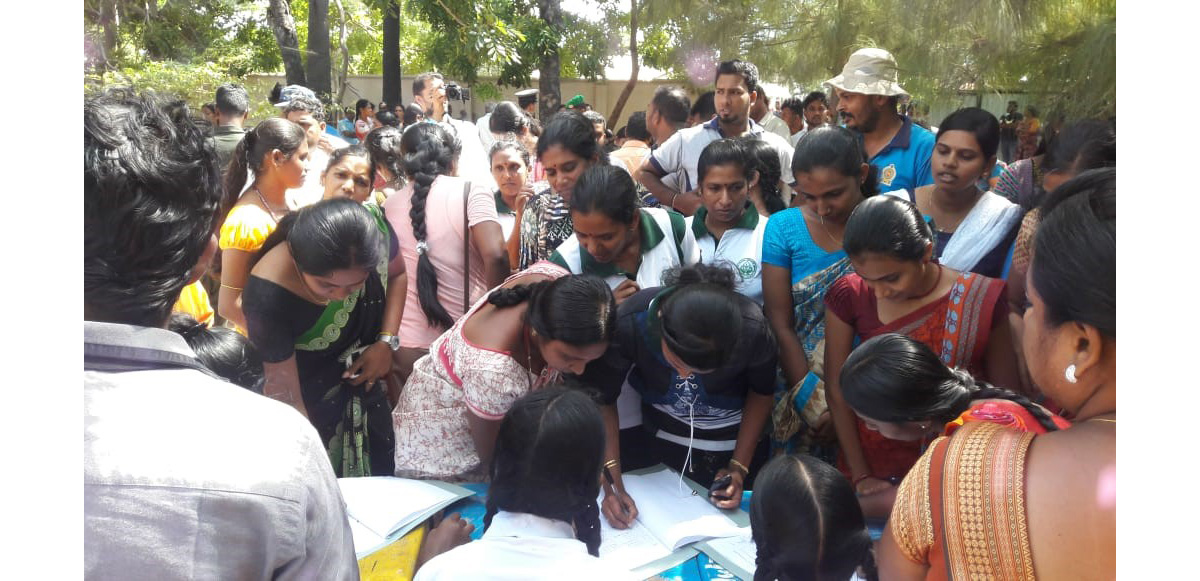The training was entitled Indian Ocean Wave 2018 for Sri Lanka and was an Indian Ocean-wide tsunami warning and communications exercise
 The registration desk at the evacuation centre
The registration desk at the evacuation centreTWO Huddersfield Professors oversaw and observed the carrying out of a tsunami warning training exercise in Sri Lanka. Afterwards, they delivered a set of recommendations to improve how tsunami warnings are carried out in the country.
Professor Richard Haigh and Professor Dilanthi Amaratunga, from the University’s Global Disaster Resilience Centre, were the two international observers for the exercise Indian Ocean Wave 2018 (IOWave18) for Sri Lanka, an Indian Ocean-wide tsunami warning and communications exercise that was held on the 5th September 2018.
The purpose of IOWave18 was to evaluate and improve the effectiveness of the Indian Ocean ‘s Tsunami Warning and Mitigation System (IOTWMS), through operational Tsunami Service Providers, the National Tsunami Warning Centres and National and Local Disaster Management Offices in responding to a potentially destructive tsunami.
The exercise simulated Indian Ocean countries being put in a tsunami warning situation and required the Warning Centres and Disaster Management Offices in each country to activate their Standard Operating Procedures (SOPs). The primary motive for IOWave18, said Professor Amaratunga, was to enhance tsunami preparedness at a community level.
The training was based on a scenario that simulated a magnitude 9.3 earthquake in the Sunda Trench West of Northern Sumatra, Indonesia. During the exercise, the Professors split themselves across two designated observation areas. Professor Haigh observed actions at the Department of Meteorology, which is Sri Lanka’s National Tsunami Warning Centre and Professor Amaratunga observed actions at the Disaster Management Centre, which is Sri Lanka’s National Disaster Management Organisation.
“During this exercise,” said Professor Haigh, “as well as noting the strengths in the tsunami warning and response chain, areas of potential improvement were also identified.
“We will now start to focus on the adequacy of plans, policies, procedures, assessment capabilities, communication, resources, and inter-agency/inter-jurisdictional relationships that support effective tsunami warning and decision-making at all levels of government and the community response, because we will be taking this forward with the end users in Sri Lanka, in collaboration with UNESCO IOTWMS,” he added.
